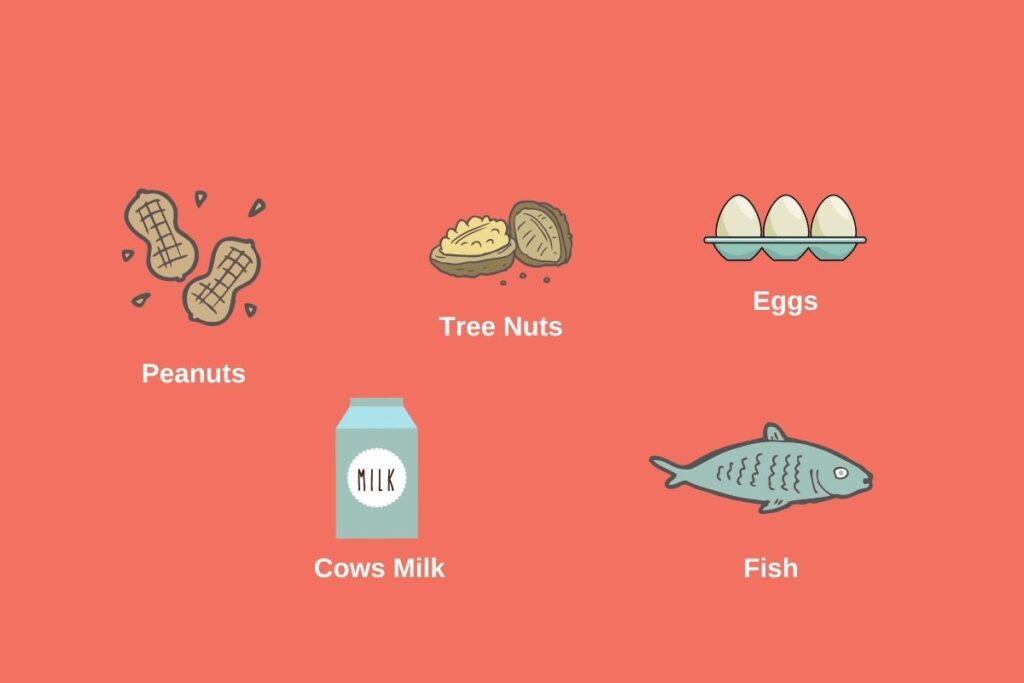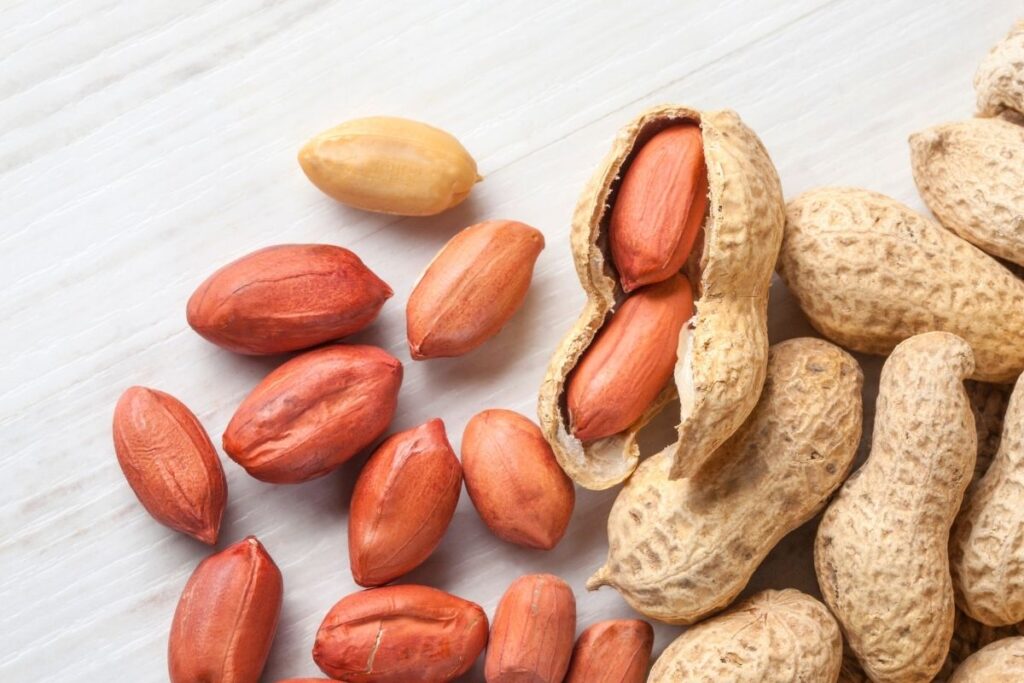It’s not surprising that getting a definitive answer on when the best time to introduce potential allergens to your baby is confusing. The advice has literally flipped in the last few years.
Previously, parents were advised to delay the introduction of these foods, and you’ll still see this suggested online and in older weaning books. However, there’s evidence that there’s no benefit to this approach.
Current Guidance about introducing allergens
Instead, two important studies, the LEAP study and the EAT study, show us that early introduction is a more effective way of reducing future food allergies. Delaying past 12 months may increase your child’s risk of developing an allergy.
Common allergens for children
Well known common food triggers (milk, egg, peanut, nuts, fish) account for more than 90% of cases.
The most common food allergies in the first few years of life include milk, egg and peanut. In children three years and older, common food allergies include peanut, tree nuts, fish, shellfish.
These foods cause 90% of food allergic reactions in Irish children
Scared about introducing allergens to your baby?
Parents regularly tell me that they are terrified about the prospect of introducing these foods, especially peanut. Try not to let the worry stop you from introducing these foods as early on in weaning as you can. And remember 94-95% of babies don’t have a food allergy.
Here’s a step-by-step guide to introducing potential allergens
- When your baby is around six months of age (not before four months of age) start first solids foods. Then introduce egg and peanut if these are part of your regular family diet. Aim to introduce by one year of age.
- Introduce each new potential allergen one at a time. If you introduce two together and your baby reacts, it’s hard to know which one is the culprit. Some people like to leave three days between each one.
- Start with small amounts (1/4 to 1/2 teaspoon) and gradually increase over a few days.
- Once successfully introduced offer the food regularly, at least once a week
- Choose a day when your baby is well
- If your baby has eczema ensure their skin is in excellent condition beforehand. If your baby has severe eczema (needed daily steroid cream) or already has a confirmed egg allergy, then speak with your doctor before you introduce peanuts at home.
- Try the food early in the day so you can monitor for symptoms.
- Continue to breastfeed while introducing solid foods, if possible.
- Rubbing food on your baby’s lip or skin first is not the right way of identifying allergies.
- Offer these allergens at the start from a spoon rather than as finger foods. They need to ingest the allergens not wear them!
Some foods like citrus, tomato and strawberries can cause a red rash around your baby’s mouth, especially if they have sensitive skin. This irritation isn’t a food allergy, and there is no need to avoid these foods.
Introducing egg for the first time to your baby
It’s generally a good idea to introduce egg before introducing peanuts. As babies who react to egg may be more at risk of having a reaction to peanut.
- Boil an egg for at least 10 minutes. Both the white and the yolk should be thoroughly cooked.
- Blitz the egg in a food processor.
- Add a ¼-½ teaspoon of egg to a vegetable your baby has already had.
- Mix well to a smooth consistency
- Repeat this again after 2-3 days, this time offering ½-1 tsp of the puréed boiled egg.
- Don’t offer for the first time if your baby is unwell
- Ideally, offer for the first few times in the morning.
- Don’t be put off by your baby making funny faces when they taste egg for the first few times!
Introducing peanut for the first time to your baby
It is recommended that you offer peanut after the introduction of egg
- Make up your baby’s puréed or mashed vegetable or their porridge (this should be something they’ve eaten a few times before)
- Start with a small amount of smooth peanut butter (with no added salt or sugar), i.e. 1/4-1/2 teaspoon.
- Add it to your vegetable or porridge.
- Stir well to a smooth consistency.
- Offer in the morning for the first few times.
- Never use crunchy peanut butter.
- Don’t offer if your baby is unwell
Other potential allergens
You may also like to introduce some of the following foods if they’re part of your regular family diet:
| Tree nuts | Never give whole or chopped nuts to children under five years of age. Use ground nuts or smooth nut butter. You can mix to fruits, vegetables or savoury dishes or mix with yoghurt or porridge. |
| Cows Milk | Infant formula, plain yoghurt and small amounts of cheese. You can add whole cows milk to food. |
| Wheat | Weetabix, well-cooked pasta or cous cous and toast fingers |
| Seeds | Hummous that contains tahini paste, milled seeds added to porridge or yoghurt or sprinkled on slippery finger foods |
| Fish and shellfish | Flaked or mashed cooked fish and shellfish. Or fish cakes. |
| Soya | Most bread contains soya flour, soya yoghurt, fortified soya milk and tofu |
For more evidence-based information on weaning check out my online Baby Weaning Course, Ready, Steady, Wean.











Hi there, you mentioned “You can add whole cows milk to food.” but I read that cow’s milk shouldnt be introduced before 12 months of age as it may put babies at risk of intestinal bleeding?
Hi Jamie. Cows milk isn’t suitable in large quantities before 12 months for that reason but small amounts used in food is fine. This is the recommendation in Ireland and the UK. Recommendations in other countries may vary.